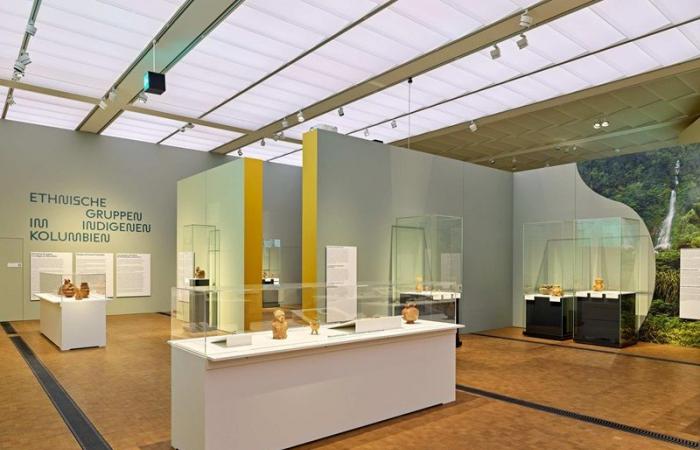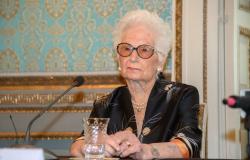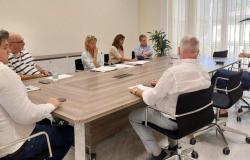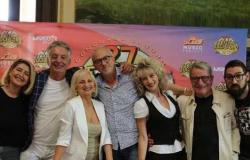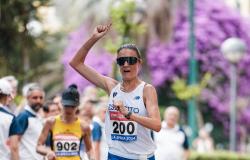The exhibition “More than gold. Luster and vision of the world in indigenous Colombia” curated by Diana Magaloni and Julia Burtenshaw continues until July 21st
The Rietberg Museum in Zurich presents the exhibition until 21 July 2024 More than gold. Luster and worldview in indigenous Colombia. Conceived and produced by the Los Angeles County Museum of Art (LACMA), the Museo del Oro in Bogotá, the Museum of Fine Arts in Houston, and members of the Arhuaco indigenous community in Colombia, the Zurich exhibition It is the only European stage and is distinguished by its exceptional artistic relevance.
There are around 400 works on displayincluding gold artefacts, ceramic vessels, stone sculptures and jewels made with feathers from Colombian, North American, German and Swiss collections, in an exhibition itinerary that allows visitors to discover an art that was until now largely unknown in European countries.
If previously the exhibitions adopted a predominantly Western-academic perspective, More than gold places the knowledge and traditions of indigenous populations in the foreground. For almost seven years, Julia Burtenshaw and Diana Magaloni (LACMA) collected information about the objects with the help of the Arhuacos, which they then fed into the conception of the exhibition. For the Zurich exhibition, Fernanda Ugalde, curator at the Rietberg Museum and co-curator of the exhibitionhas expanded the content by integrating additional important aspects in close coordination with the curators of LACMA, the team of archaeologists from the Museo del Oro, partners from the Arhuaco community and representatives of the Colombian art world.
For centuries, in the West, pre-Hispanic Colombia has been associated primarily with the myth of “El Dorado,” an idea centered on the material wealth of the art created by indigenous peoples. The pioneering exhibition More than gold offers an unprecedented look at the artistic production and culture of this region, dedicating itself for the first time to the variety of extraordinary works of pre-Hispanic Colombia and interpreting them from an indigenous perspective.
Gli Arhuaco they live with three other indigenous groups in the Sierra Nevada de Santa Marta, in the Caribbean part of Colombia. In their self-concept they consider themselves descendants of the Tairona, a people who inhabited the region well before the arrival of the Spanish. For the Arhuaco, archaeological sites dating back to that era – such as the pre-Hispanic city of Ciudad Perdida, rediscovered in the 1970s – are not simple testimonies of the past, but true sacred and spiritual places that are still cared for and venerated today. Likewise, they believe that the works created by the Tairona are not art of the past, but rather living objects and guardians of fundamental values.
These artifacts concern cosmology as well as nature and symbolic ideals.. For the Arhuaco, they reflect a human perspective and a conception of the world that is also relevant in the present. The existence of ancestors is a fundamental aspect of the imagination of indigenous societies. This translates into a particular interpretation of life, the past, the future and the relationship with other beings. For example, according to the Arhuaco, everything has a soul, including trees, stones and containers. Everything is part of creation and therefore has neither a beginning nor an end. The exhibition takes this vision into account, since the labels of the objects do not indicate the years to which they date back.
The involvement of the communities of the Sierra Nevada de Santa Marta and of Colombian artists it is not limited to collaboration on a curatorial level. For the Zurich exhibition the Rietberg Museum has developed a rich program of events together with them. For example, it will be possible to attend a performance of the theatrical piece “Los saberes del Tungurahua” by Leonardo Abonía. The playwright and researcher originally from Cali has studied pre-Hispanic theatre, still unknown to most, for many years. Meditation sessions with the Arhuaco in the museum’s exhibition rooms and park will allow visitors to familiarize themselves with the worldview of this indigenous community. The musician and ethnomusicologist Juan Fernando Franco, also involved in the conception of the exhibition, will present his work and will play various aerophone instruments such as flutes, fifes and pre-Hispanic ocarinas, thus reconnecting to the sound world of his ancestors. Family workshops dedicated to the ocarina will also be offered.

